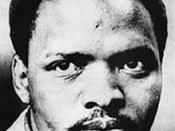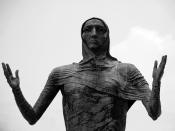Black resistance in South Africa took two main forms during the 1970's: industrial action and Black Conciousness. The government were unable to effectively deal with both of these movements and, in the end, decided that they needed to adress apartheid itself. Mean while, many black leaders were imprisoned and even murdered by the government police.
From 1961 and 1963 the police succeeded in sufficiently weakening black resistance movements for the duration of the 1960's. A way that they did this was by imprisoning of exiling many black leaders. The ANC and PAC were also banned and the government made sure that blacks were policed closely and harshly. However, the government had much more trouble keeping the blacks down in the 1970's.
In the 1960's, the number of blacks striking and protesting was only around 2000 a year. This number increased largely in 1973 with a giant 61, 000 blacks striking in just the first three months of the year.
The main reasons for this huge rise of strikes were wages not being high enough to maintain a reasonable standard of living and very poor management. These new strikes were much harder to police because the the strikes were short, involved many people and didn't have leaders that the government could imprison or kill. The new strikes were extremely effective, not just in acheiveing their aims of better wages, but also in breathing new-life into protesting and anti-apartheid movements.
From the beginning of black resistance movements, there had always been an issue about whites being involved in anti-apartheid movements. In the 1940's Anton Lembede had often said that "Africa was a black man's country" and that the ANC absolutely had to be a black nationalist movement. Robert Sobukwe and the PAC also insisted that blacks should liberate themselves, a view which...


